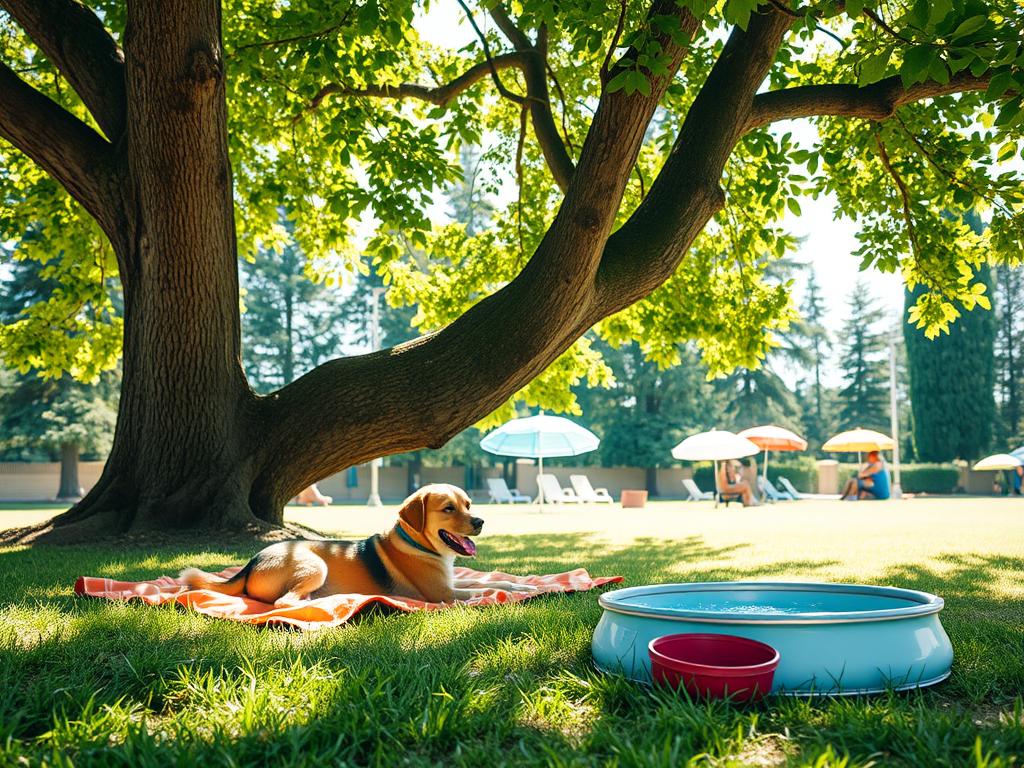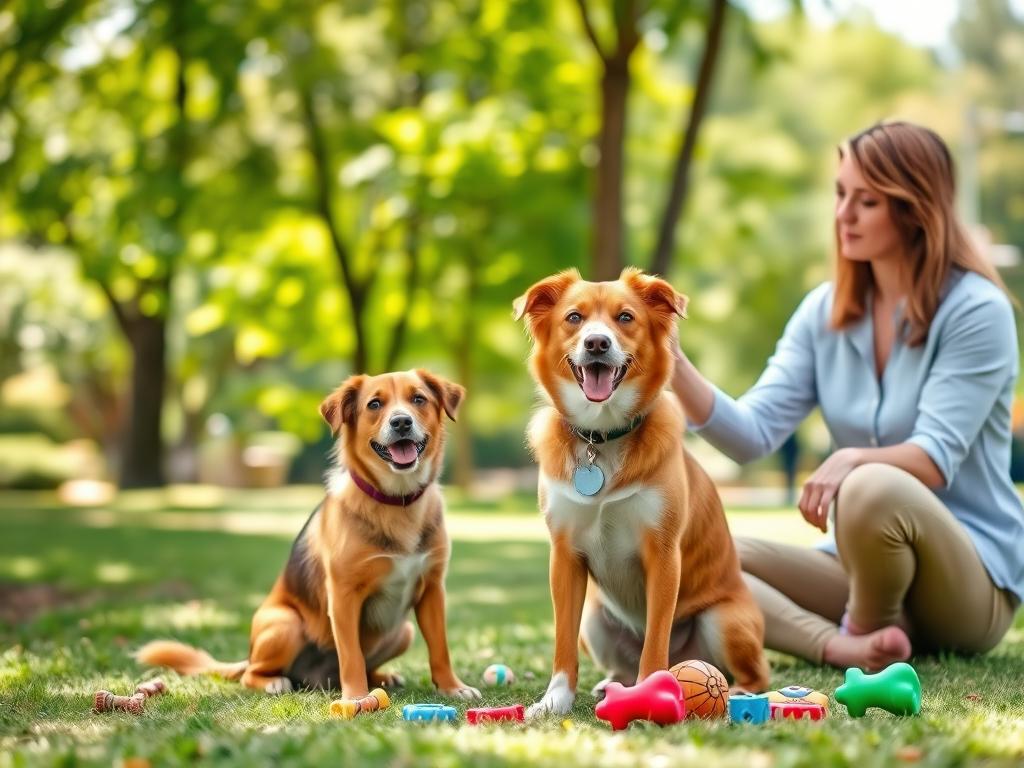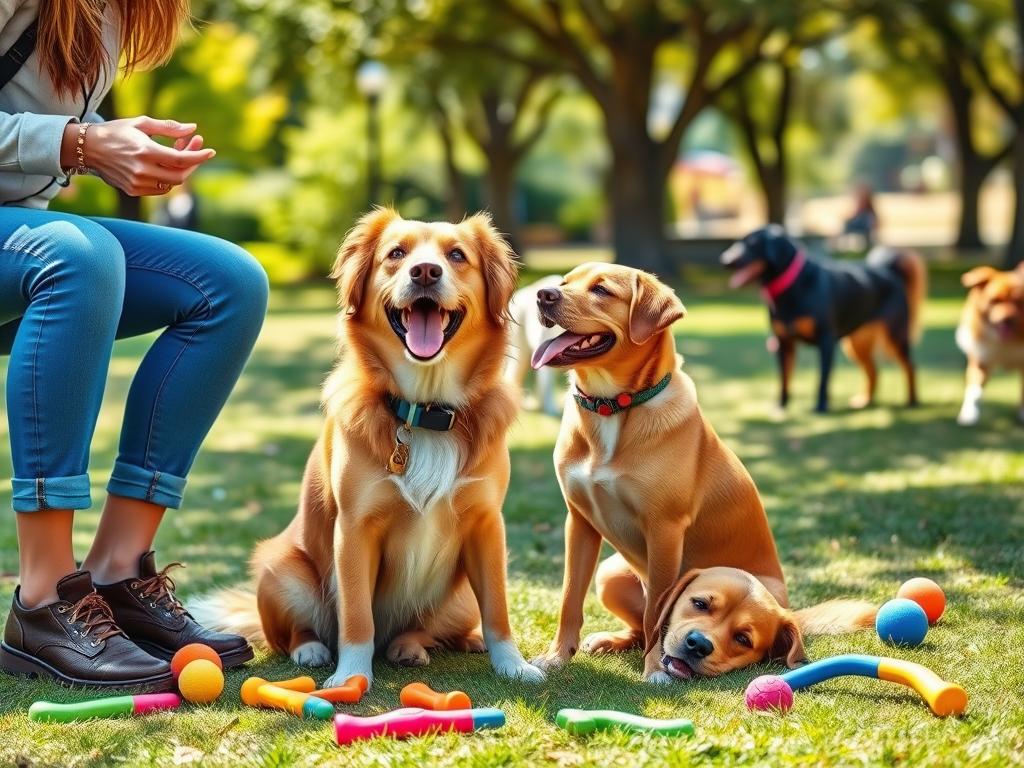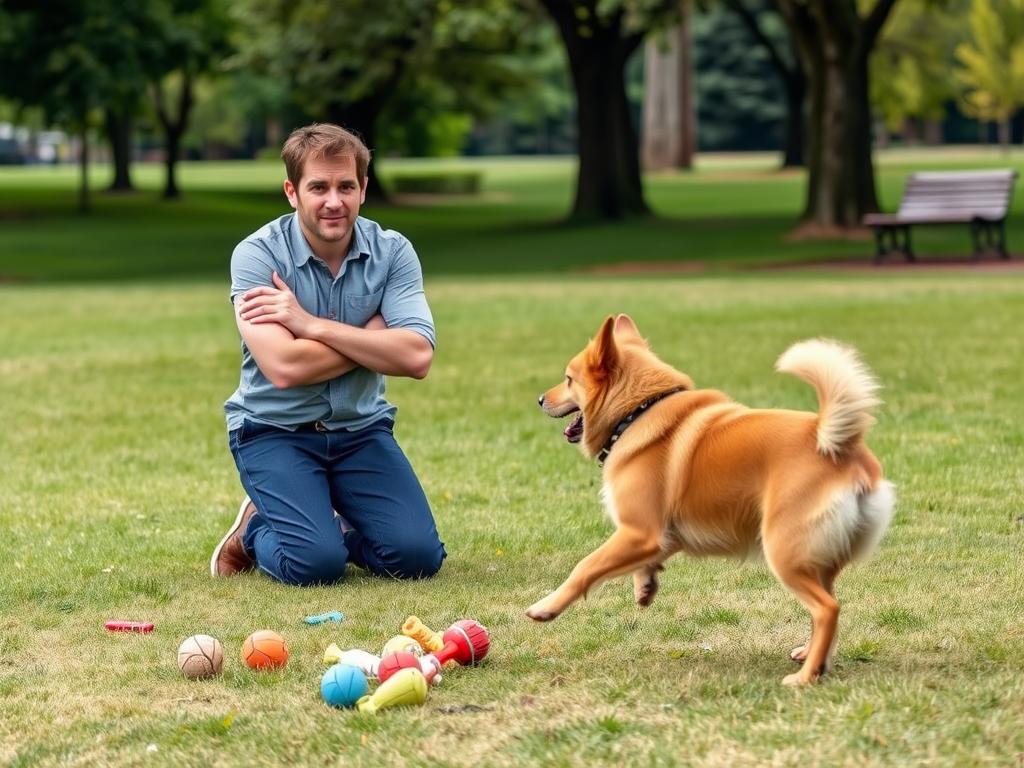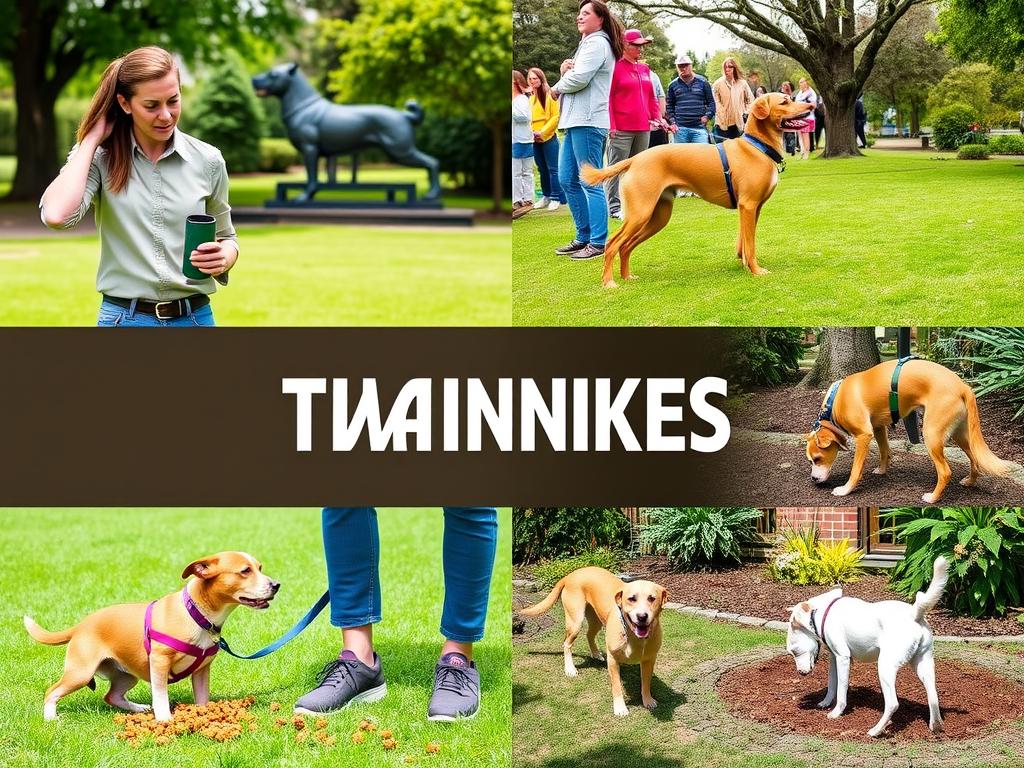Did you know that on an 85-degree day, the inside of a vehicle can reach 120 degrees within just 30 minutes, even with the windows slightly open? This alarming fact highlights the urgent need for dog owners to learn how to protect their pets from heat in summer. As temperatures rise, ensuring the safety and comfort of our furry friends becomes crucial. This guide will provide essential dog heat safety tips and summer heat precautions for pets, helping you avoid the dangers of heatstroke and creating a more comfortable home environment for your canine companions during the sweltering months.
Key Takeaways
- Understanding the risks of heat exposure is vital for your dog’s safety.
- Provide shade and fresh water during outdoor activities.
- Recognize the signs of heat exhaustion, such as heavy panting and lethargy.
- Consider the breed of your dog, as some are more heat-sensitive.
- Utilize cooling products like vests and mats to help regulate your dog’s temperature.
- Create a cool indoor environment to protect your dog from rising temperatures.
- Stay informed about emergency procedures for heat-related issues.
Understanding Canine Heat Stress
Understanding the signs of heatstroke in dogs is crucial for every pet owner, especially during the hot summer months. Heat stress can lead to severe health issues and even be life-threatening. Recognizing symptoms early plays an important role in preventing overheating in dogs, enabling timely intervention and care.
Signs of Heat Exhaustion in Dogs
Identifying the signs of heat exhaustion in dogs should be a priority for guardians focused on protecting pets from extreme heat. Common indicators include:
- Excessive panting
- Drooling
- Bright red or purple tongue and gums
- Rapid heartbeat
- Weakness or lethargy
- Vomiting or diarrhea
- Uncoordinated movements or seizures
Awareness of these symptoms allows pet owners to act swiftly. Dogs with rectal temperatures of 104-106 degrees Fahrenheit may be experiencing heat stress. Temperatures above 106 degrees can result in heatstroke, which necessitates urgent action.
Differences Between Breeds and Heat Tolerance
Different dog breeds display varying levels of heat tolerance. Brachycephalic breeds, such as Pugs, Bulldogs, and Boston Terriers, struggle more than others due to their less efficient panting ability. Overweight dogs, elderly pets, or those with underlying health conditions face increased risks, making diligent monitoring essential during hot weather.
Health Risks Associated with Overheating
Overheating can lead to severe health risks, including organ damage and potentially death. Signs of heatstroke in dogs may escalate quickly, from initial symptoms like vomiting to more severe health complications. Owners should always be proactive in preventing overheating in dogs by providing ample shade, fresh water, and avoiding strenuous activities during peak heat times.

Safe Outdoor Activities for Dogs
Engaging in outdoor activities with your dog during the summer can be enjoyable, but it’s crucial to prioritize safety. Keeping your dog cool in hot weather requires careful planning to ensure both fun and comfort. By choosing appropriate times and utilizing the right gear, you can enhance the summer care for your furry friend while promoting their health and well-being.
Best Times for Walks and Play
To avoid the peak heat, plan walks and outdoor play sessions in the early morning or late evening. During these cooler hours, your dog will be less susceptible to overheating. Peak heat typically occurs between 10 am and 4 pm, making it essential to shift outdoor activities to safer times. For those considering traveling to dog parks or beaches, this timing helps reduce the risks associated with heat stress, particularly for brachycephalic breeds like pugs.
Recommended Gear for Hot Weather
Equipping your dog with the right gear can significantly improve their comfort level. Consider using:
- Cooling vests, which help regulate body heat.
- Portable water bowls for easy hydration on the go.
- Dog boots to protect their paws from hot surfaces.
Providing these essentials can make outings enjoyable while helping to prevent heat-related issues.
Hydration Needs During Summer Fun
Maintaining proper hydration is vital for your dog’s health during hot weather. Dogs should drink water regularly, especially after playtime or walks. Signs of dehydration include dry gums and lethargy. Adding water-rich fruits, such as cucumbers and watermelon, can also aid in keeping your pup hydrated. Consider making puppy popsicles as a fun treat: they require only 10 minutes of prep time and can help cool down your dog during hot days.

Creating a Cool and Comfortable Home Environment
During the sweltering summer months, ensuring a refreshing indoor atmosphere is vital for the comfort and safety of your dog. By implementing several effective strategies, you can keep your furry friend relaxed and cool while minimizing the risks associated with overheating. Take note of these canine summer safety tips to create an inviting sanctuary at home.
Using Fans and Air Conditioning Effectively
Utilizing fans and air conditioning can significantly lower indoor temperatures and create a more comfortable environment for your pet. Place fans to circulate air effectively throughout your living space. Keep air conditioning units clean and well-maintained to promote efficient cooling. Consider setting the thermostat to an ideal range of 70-72 degrees Fahrenheit, ensuring it remains compatible with your dog’s temperature needs. These summer heat precautions for pets help prevent heat stress, especially during peak hours of warmth.
Ideal Indoor Temperature for Dogs
Dogs naturally maintain a body temperature below 102.5 degrees Fahrenheit. Keeping your home cool in the summer plays a crucial role in avoiding heat-related issues. A temperature that is slightly cooler than typical room temperature offers a safe haven during the heat. Providing controlled environments helps in monitoring your dog’s well-being effectively.
Cool Mats and Beds for Your Pup
Providing cooling mats or specialized beds can promote comfort for your dog during summer. Such products are designed to ease the heat produced by their bodies, helping to maintain normal temperature levels. Investing in these cooling solutions not only enhances your pet’s comfort but also serves as an important part of overall summer heat precautions for pets. Ensure your dog has unrestricted access to these resources when seeking relief from the heat.
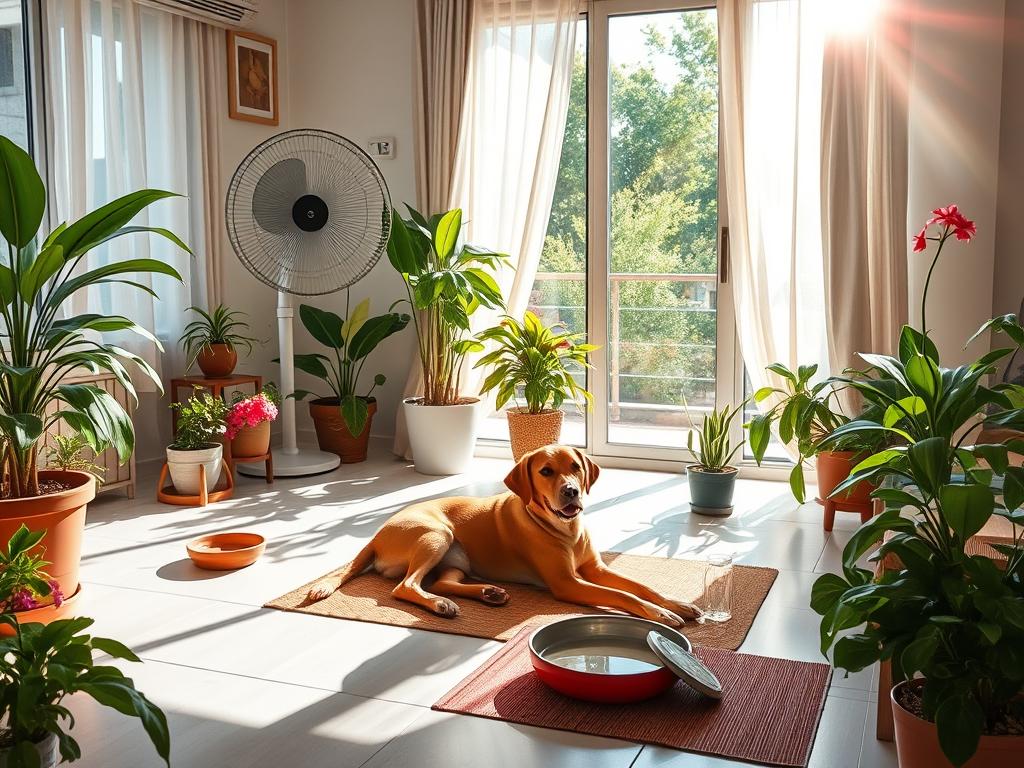
Hydration: The Importance of Water for Dogs
Proper hydration is crucial for your dog’s health, especially during the hot summer months. Dogs have unique hydration needs during summer fun, which can be influenced by factors like size, activity level, and climate. It is essential to ensure they receive enough water to prevent overheating in dogs, particularly when engaging in outdoor activities.
How Much Water Should Your Dog Drink?
As a general guideline, dogs need about 1 ounce of water per pound of their body weight each day. During hot weather, this requirement increases to 3 to 4 times the normal amount, based on their activity level. Adult dogs that are active or spending time outside will naturally need more water. Remember to offer fresh water regularly to keep them hydrated.
Signs Your Dog is Dehydrated
Dehydration can pose serious health risks. Watch for signs such as:
- Dry, sticky, or pale gums
- Lethargy and decreased energy levels
- Loss of appetite
- Increased heart rate
- Reduced urination
If you notice any of these symptoms, it may be an emergency requiring vet attention. Maintaining vigilance about your dog’s hydration can significantly aid in preventing overheating in dogs.
Creative Ways to Encourage Drinking
Some dogs might not show interest in drinking water, particularly if it’s stale or dirty. Here are some fun methods to encourage them to hydrate:
- Regularly refresh their water bowl for a cleaner option.
- Consider a doggie water fountain that provides fresh, flowing water.
- Add water to dry kibble or offer wet food, which is typically 75-80% water.
- Serve ice cubes or frozen treats made from broth to make drinking more enticing.
- Blend a dog smoothie with fruits like strawberries and bananas for a hydrating treat.
These creative options not only address hydration needs during summer fun but also add variety to your pup’s diet. For further insights into daily water intake and recommendations, you can explore this resource.
Grooming Tips for Hot Weather
Summer can be challenging for our furry companions, making proper grooming essential for their well-being. By implementing effective summer heat precautions for pets, you can ensure that your dog remains cool and comfortable despite rising temperatures. Dog heat safety tips revolve around grooming practices that cater to their individual coat types and needs.
Best Summer Grooming Practices
Regular grooming plays a crucial role in preventing heatstroke during hot weather. Dogs with long or thick hair are especially susceptible to overheating. Consider the following best practices:
- Schedule baths every few weeks to keep your dog clean and comfortable.
- Trim your dog’s coat when appropriate to help with cooling without compromising their overall health.
- Utilize products designed for sensitive skin, especially in breeds prone to sunburn.
Understanding Coat Types and Summer Care
Different breeds have specific grooming needs, particularly during summer months. The following recommendations address various coat types:
| Coat Type | Recommended Grooming Tools | Special Considerations |
|---|---|---|
| Double-Coated (e.g., Golden Retrievers) | Slicker brush and wide-tooth comb | Extra attention needed to remove soft undercoat to promote airflow. |
| Single-Coated (e.g., Dachshunds) | Pin brush and comb | Regular brushing helps to keep their coat healthy and tangle-free. |
| Short-Haired (e.g., Beagles) | Rubber grooming mitt | They too can suffer from sunburn; consider sunblock for exposed areas. |
Regular Brushing to Prevent Overheating
Regular brushing not only keeps your dog’s coat tangle-free but also aids in temperature regulation. This process helps eliminate loose fur and undercoat that can trap heat. Be attentive to breeds like Old English Sheepdogs and Shih Tzus, as their unique textures require more frequent grooming to maintain comfort during the summer. The American Kennel Club’s AKC S.A.F.E. Grooming Program provides further guidance for proper grooming techniques to ensure a safe and effective experience for both pets and groomers.
Emergency Preparedness for Heat-Related Issues
When summer temperatures soar, dog owners need to be prepared for emergencies related to heat exhaustion. Understanding basic first aid can make a significant difference in keeping dogs safe. Familiarize yourself with the signs of heat-related illness and what actions to take in case your pet shows distress during extreme heat.
First Aid for Heat Exhaustion
If you suspect your dog is experiencing heat exhaustion, immediate action is essential. Begin by moving your dog to a cooler area, such as an air-conditioned room or a shaded area outdoors. Offer cool, fresh water, but avoid ice, as it can cause shock. Use wet towels or a cooling mat to help lower body temperature gradually. Watch for critical signs like excessive drooling, weakness, or panting. Following these canine summer safety tips can be lifesaving, especially in severe heat.
When to Contact a Veterinarian
Recognizing when professional help is necessary is crucial for protecting pets from extreme heat. If your dog displays symptoms such as vomiting, diarrhea, seizures, or excessive lethargy, make a veterinary appointment immediately. Heatstroke can occur when a dog’s body temperature exceeds 103°F and may require urgent medical attention to prevent serious harm.
Tips for Traveling with Your Dog in Heat
Traveling during hot weather poses its challenges, but certain precautions can help. Always ensure your dog remains hydrated by keeping water available during trips. Avoid leaving pets in parked vehicles, as temperatures can rise dangerously high even on mildly warm days. Schedule travel during early morning or late evening to avoid peak heat hours. Consider using cooling aids like harnesses and blankets designed for pets to keep them comfortable.
| Signs of Heat Stroke | Immediate Actions |
|---|---|
| Excessive panting | Move to a cooler area |
| Drooling | Provide cool water (not ice) |
| Weakness or fatigue | Use wet towels to cool down |
| Vomiting or diarrhea | Contact a veterinarian |
| Seizures or collapse | Seek emergency veterinary help |
Being prepared can ensure your furry companions remain safe and comfortable throughout the summer. Implementing canine summer safety tips not only safeguards their wellbeing but also provides peace of mind for dog owners. Enjoy the beautiful weather while keeping your pets protected!
Additional Resources for Dog Owners
As the summer heat rises, ensuring your dog’s safety and well-being becomes a priority. There are several recommended products for summer safety that can help keep your furry friend comfortable in warmer temperatures. Consider investing in cooling mats, portable water bowls, and dog-friendly sunscreen to mitigate the risks associated with heat exposure. These tools not only provide relief on hot days but also help prevent heatstress and dehydration.
Recommended Products for Summer Safety
For those looking for local services, many establishments offer cooling and care for pets during the sweltering months. Professional grooming shops can provide summer cuts or baths, ensuring your dog is better equipped to handle the heat. Additionally, pet daycares often have designated cooling areas where dogs can retreat from the sun while still enjoying social activities.
Educational Websites and Organizations for Canine Health
Finally, staying informed is crucial for canine health. Numerous educational websites and organizations for canine health offer valuable resources, including guidelines on recognizing the signs of heat stress in pets. For further insights on maintaining a healthy diet that supports your dog’s coat condition, check out this link. Being proactive and educated will help ensure that your dog enjoys a safe and healthy summer.

